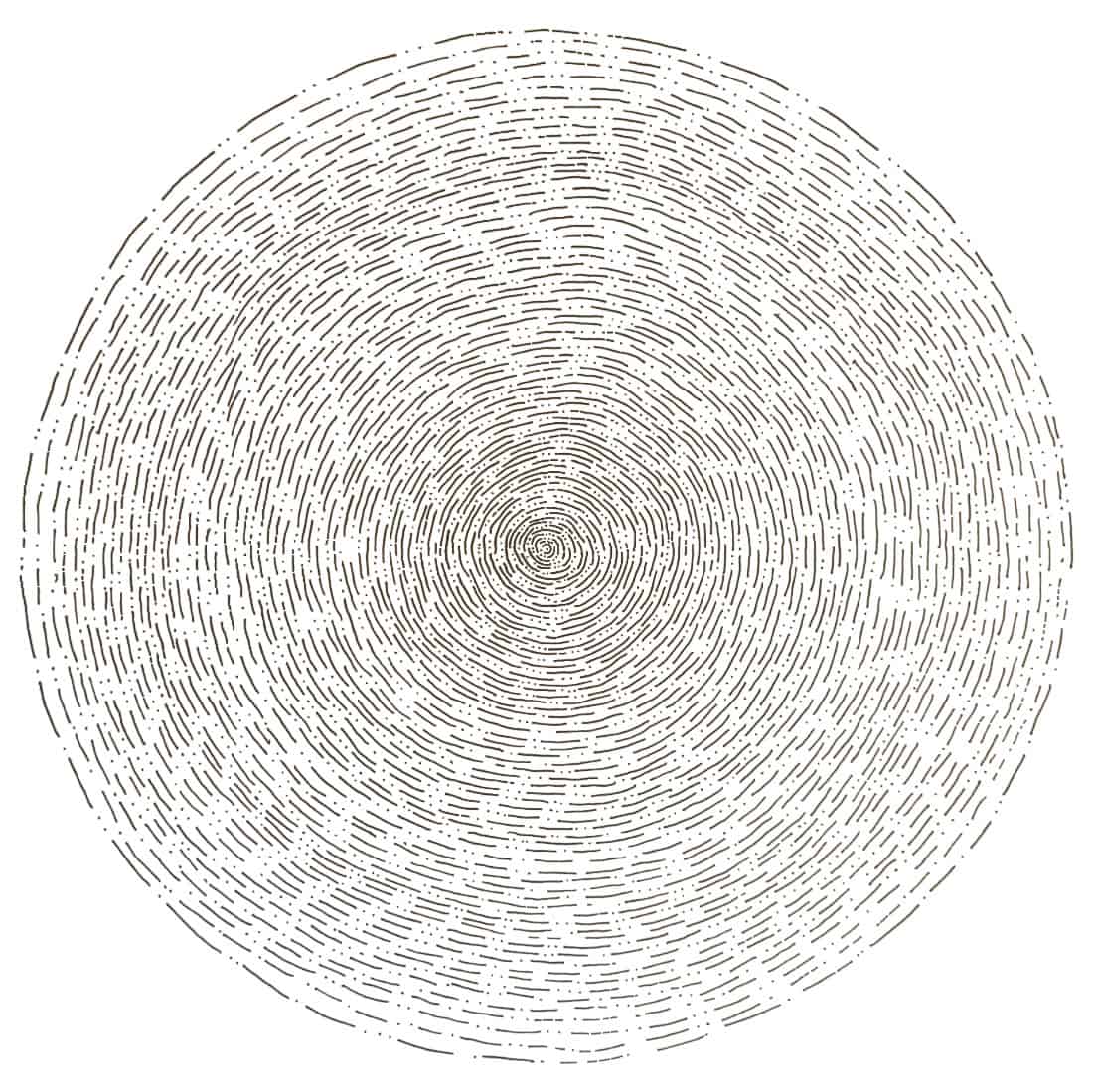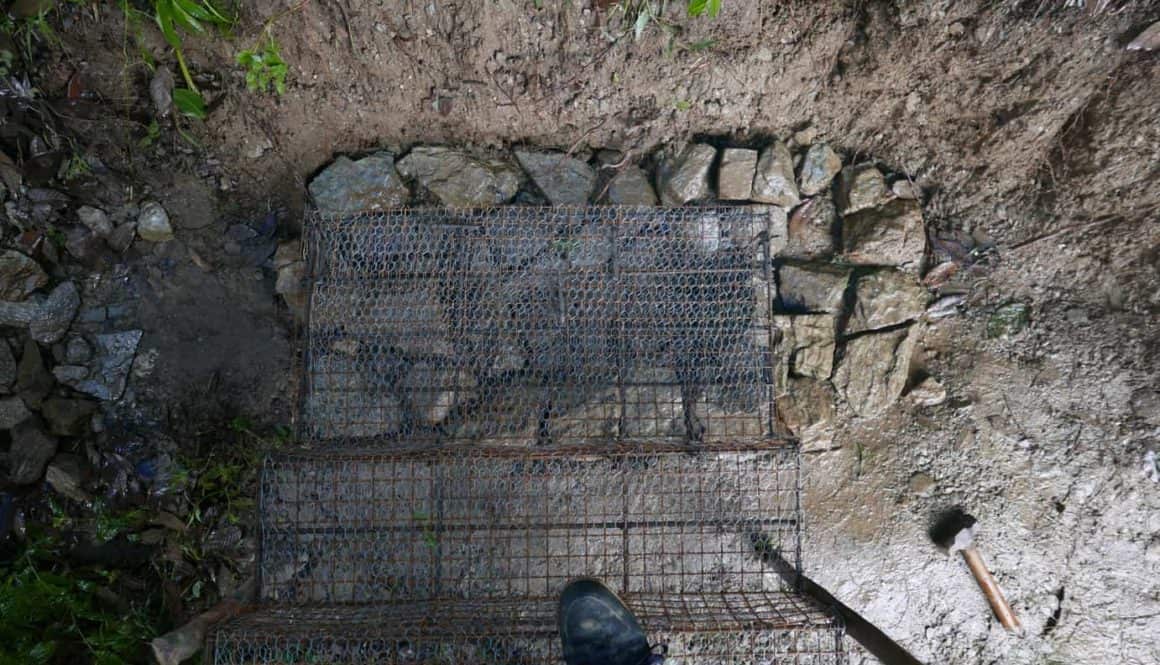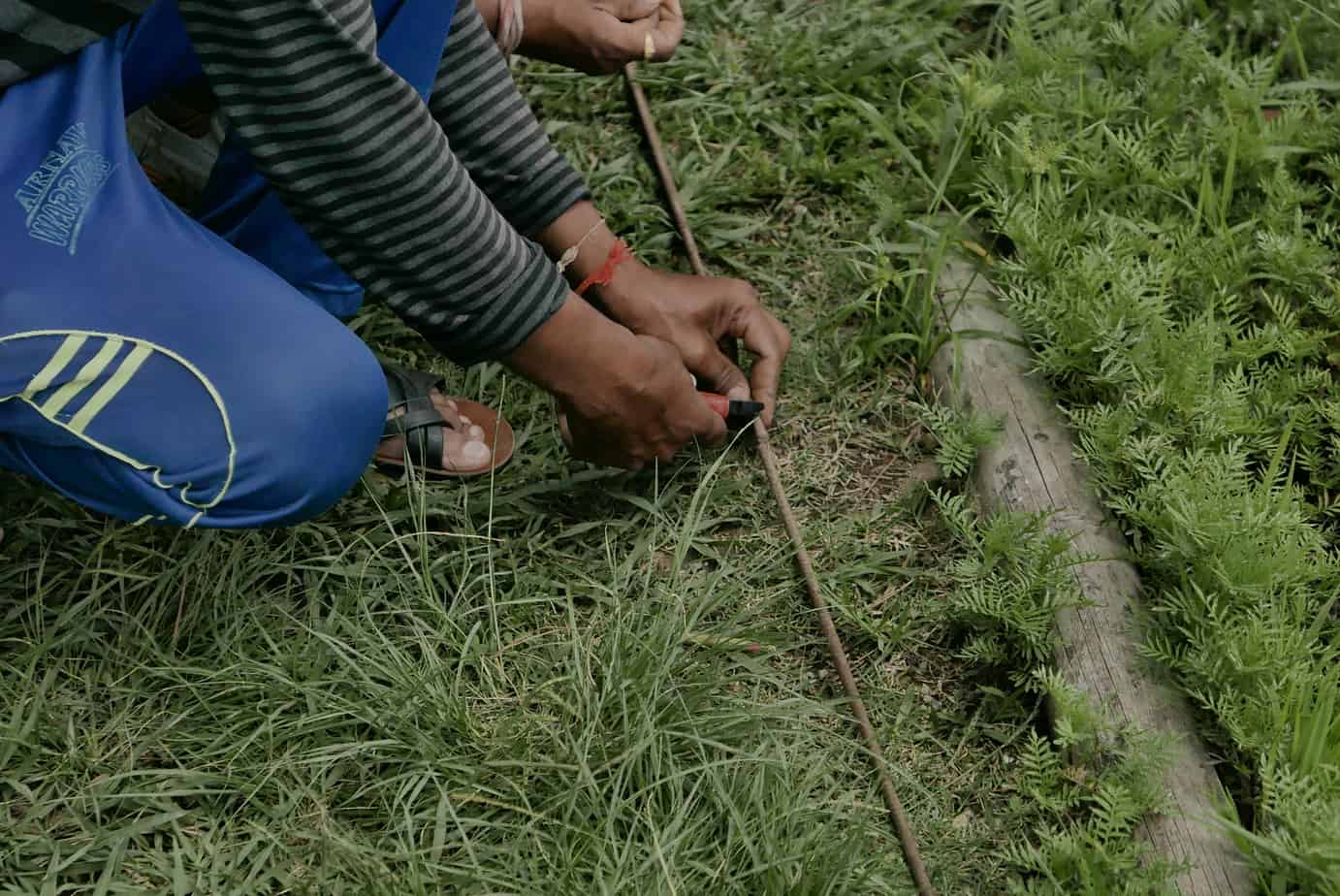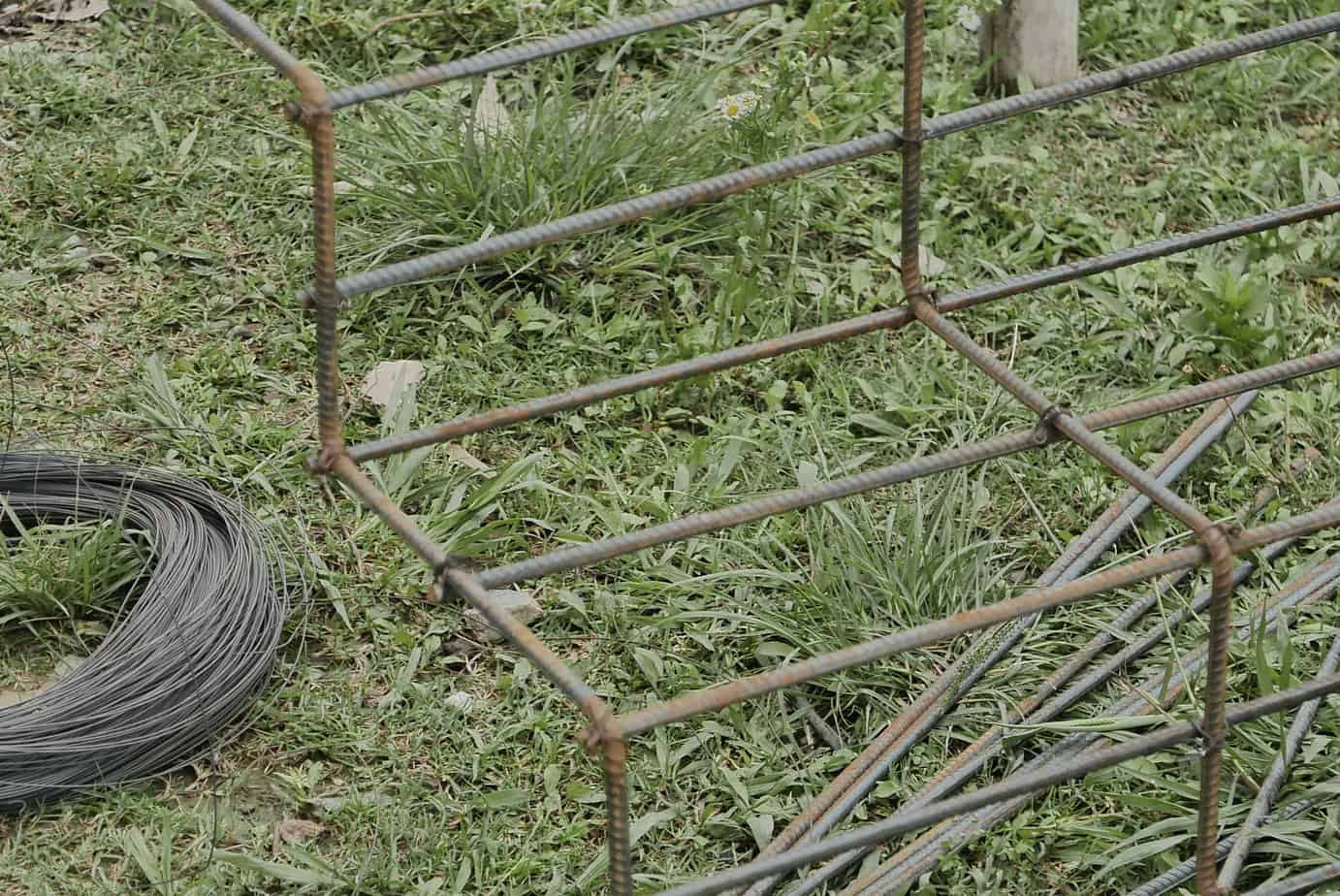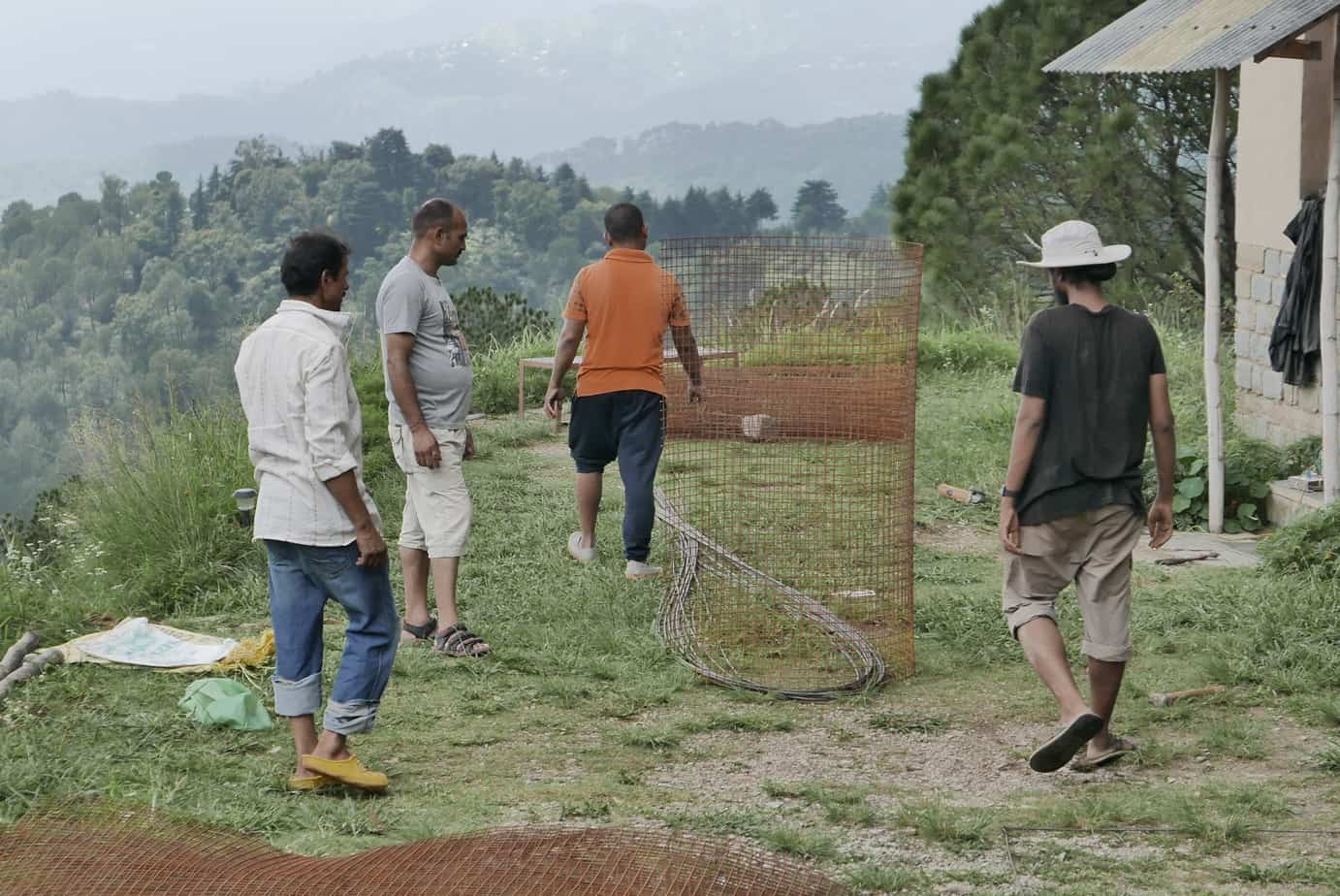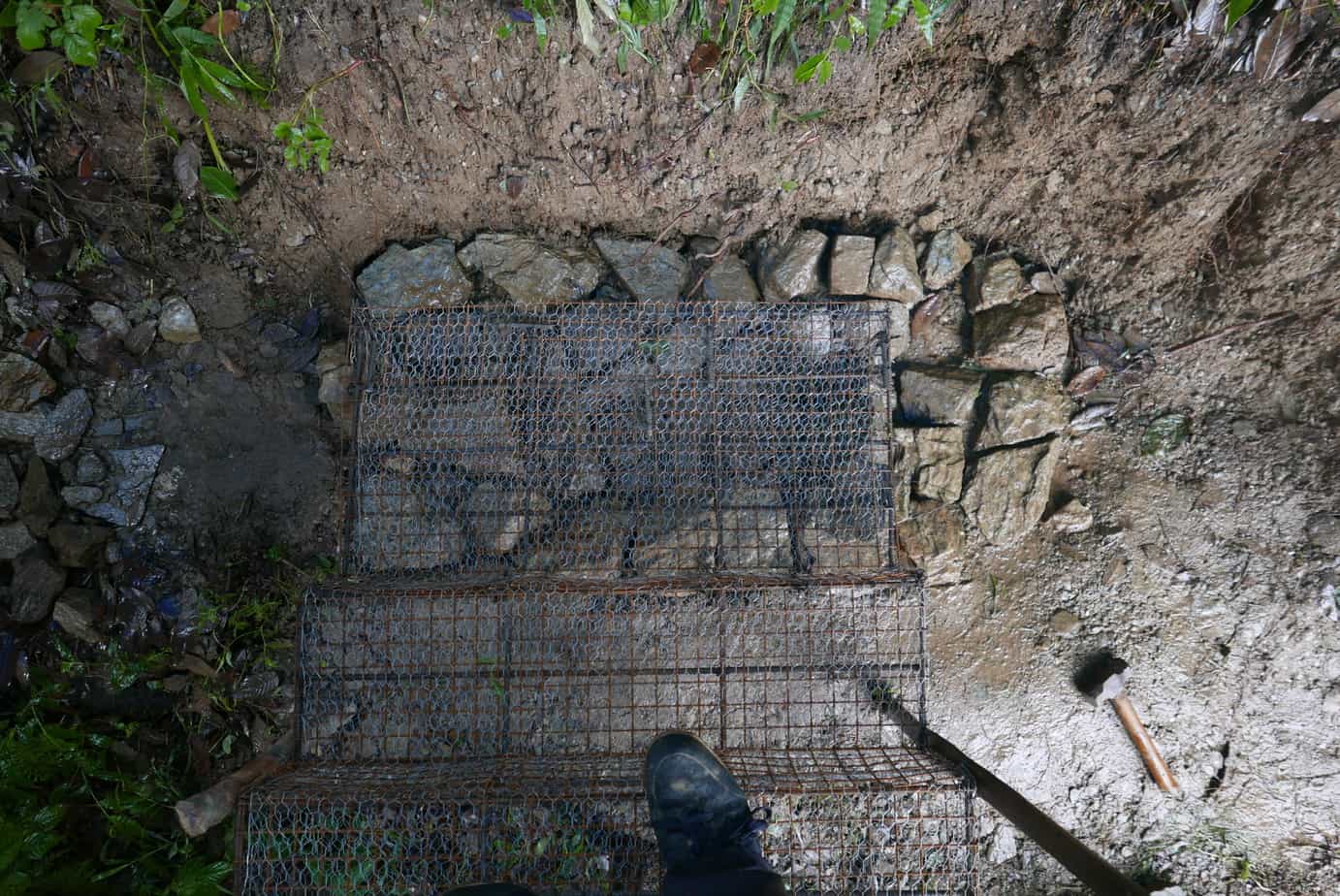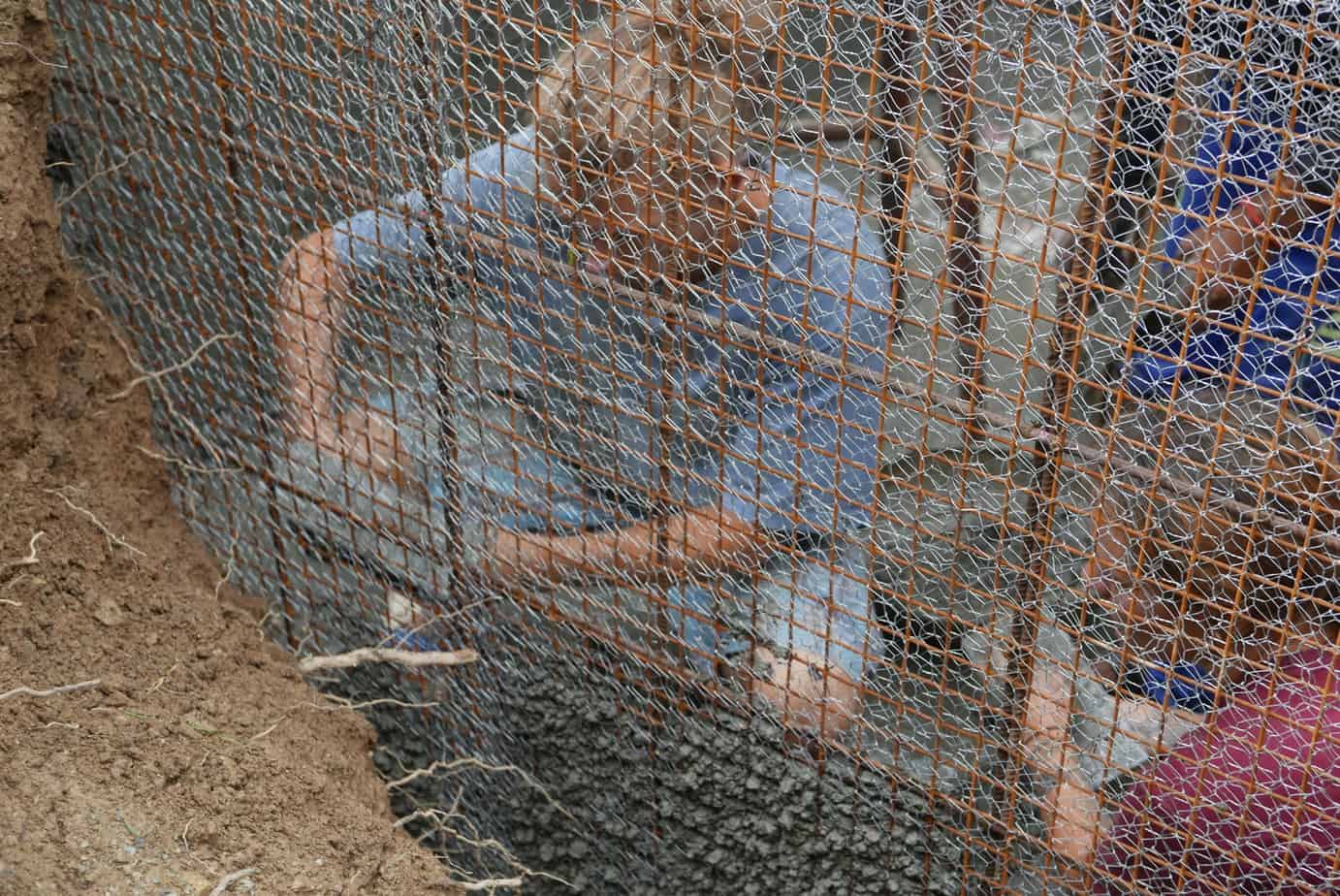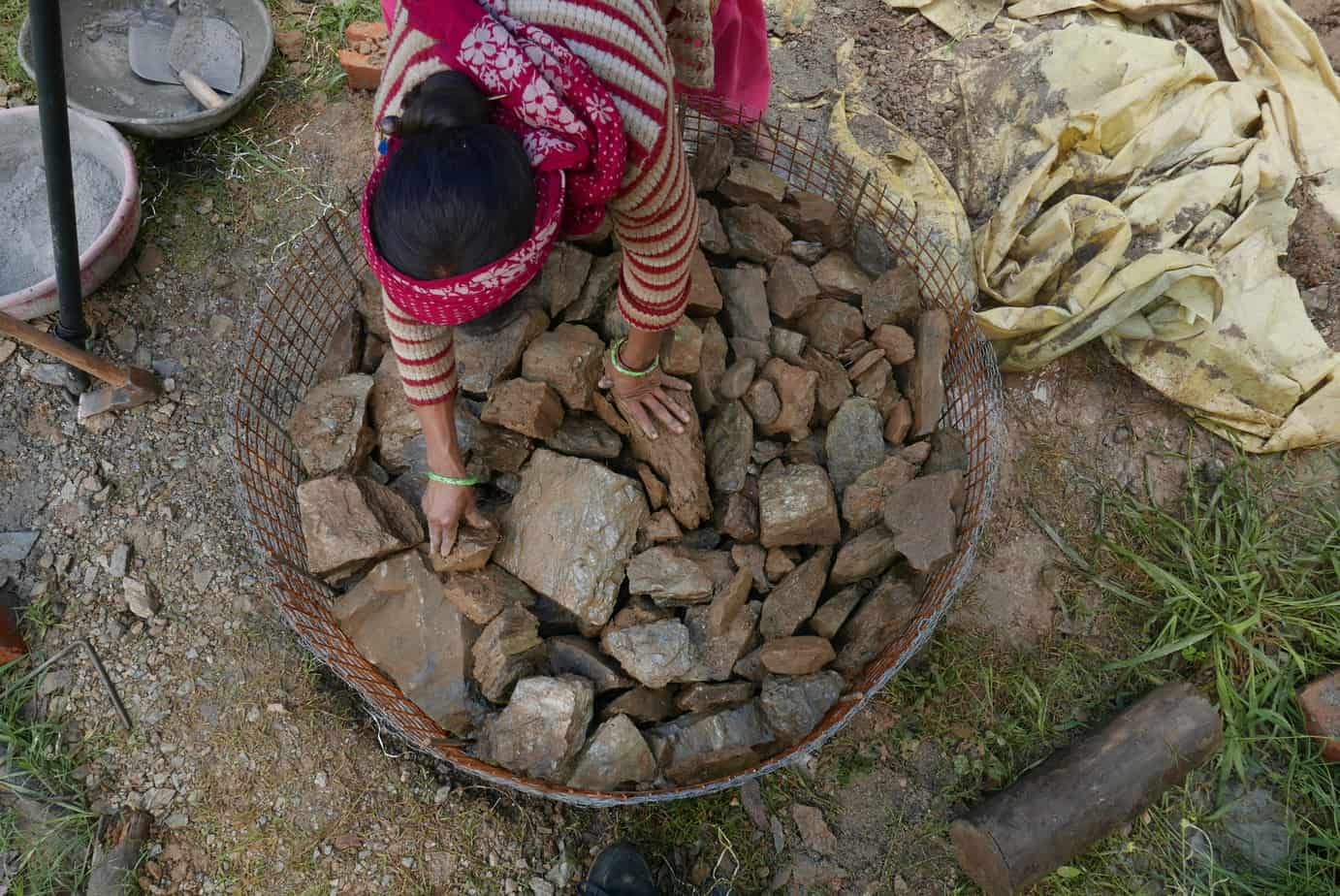experiments with ferrocement
Whilst at Dharmalaya we ran a workshop with Amit Mhatre, a ferrocrete artisan who creates huge curved forms with ferrocrete. He is known for creating 9m diameter spherical water containers and many curved roofs including a roof in the shape of a lotus flower.
During his time at Dharmalaya we worked on a 10,000l water container, a smaller 1000l cylindrical water container and some floating stairs. For each thing we created we started by ‘outlining’ the shape using 9mm reinforcement, covering the sides with weld mesh and then chicken mesh, two layers on the external side and one on the internal. All the materials are secured together using binding wire. Ferrocement is strong due to the amount of surface area that the cement is in contact with the steel, and is strong in the number of points of contact rather than the strength of materials. Ferrocrete has a high strength to weight ratio and can be formed in almost any shape that you can bend the steel to.

Amit has made his own tools to bend the steel reinforcement rods with using sprocket spanners with a 45degree head on one end and flat on the other. The sprocket is ground round so that the reinforcement can fit through. He further developed his tool so that it wasnt necessary to loop the steel through the reinforcement, but to just be able to hook it on. By using a tool in each hand it is possible to bend the steel easily and into almost any imaginary form. Using the 45degree ends it is possible to bend the reinforcement quickly into a perfect 90-degree bend. Amit worked quickly free forming and bending the reinforcement into a near-perfect circle for the cylindrical water tanks. It was mesmerising to watch his experience with these tools speak for itself as he bent the straight steel into a circle with the correct diameter first try.
Ferrocement was used for these tanks due to their strength and the minimal amount of material used. Much less cement and steel are used compared to normal concrete tanks. The cement mix is plastered first from the inside out, let to cure and then plastered from the opposing side. For the waterproofing of the tanks, a traditional mix of lime and jaggery was plastered internally. It was inspiring to learn further ferrocement techniques and I hope to use them in the future.
